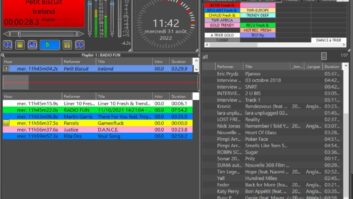
As we spot-check radio groups for how their East Coast facilities weathered Sandy, we contacted Clear Channel, Cumulus and Lincoln Financial Media.
Clear Channel currently has an estimated 50 eastern stations that have had to rely on some sort of backup or emergency system to stay on the air and/or supply programming, according to Executive Vice President for Engineering Systems & Systems Integration Jeff Littlejohn.
Clear Channel has been working through many challenges, but he says the company was well prepared for Sandy thanks to company engineering teams. Those employees “worked tirelessly in the days leading up to the storm fueling generators, performing preventative maintenance and testing backup systems, to ensure that we could continue to supply high quality signal to our programming teams. While some stations are currently working on generator power, all are still broadcasting and delivering vital information to their communities,” according to Littlejohn.
The Clear Channel engineering teams also staged emergency generators and portable transmitters in Philadelphia, Washington and Charlotte. That gear, he notes, is ready to go in the event of any additional failures. “The teams continue to be on standby, delivering hourly reports on our stations’ current status.
Cumulus Media SVP Engineering & IT Gary Kline told us a few stations lost power early on in the storm. He credited company engineers for being engaged in storm prep and monitoring before, during and now, after the storm.
Beginning with the first hints that Sandy was going to affect its markets, he said, Cumulus began an intense communication and action plan that it has in place for events like this. It reaches across multiple departments including traffic, management, programming, and engineering.
Storm prep mirrors regular prep in some ways, including generator checks, topping off fuel tanks, ensuring all main and backup transmitters are functional, ensuring that all main and backup STL paths are functional, checking station simulcast systems, assigning technical staff for 24/7 coverage and knowing who will be at the studio/who is on call. They do all of this to prepare for worst-case scenarios which are unique to each market and station facility, according to Kline.
“Programming, Traffic and other departments all had their respective checklists and game plans. One of the things I tell our guys routinely is: fueling before the storm is the easy part. It’s getting fuel during and after the storm that’s the tough part. Make sure you have good resources in place because that’s when you need fuel buddies the most.”
Lincoln Financial Media VP Engineering Barry Thomas reported no problems with stations in Miami and Atlanta.
Send information about your own organization’s Sandy prep or problems to [email protected].












